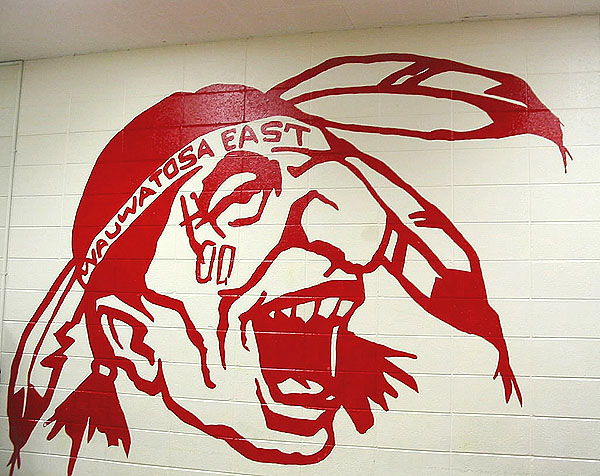Mascots influence everything
Changing mascots doesn’t signal failure, lack of honorThe question of mascots is significant for Native Americans. It transcends sports and entertainment. It influences law. It dominates resource management. It profoundly impacts every aspect of contemporary American Indian policy and shapes both the general cultural view of the Indian as well as Indian self-image. No groups other than the Indian face the legal situation in which their land, as well as their economic, political and cultural fate, is so completely in the hands of others. That is so because of the way in which substantial tribal resources are held “in trust,” with the management and regulation, if not always operation, resting with the federal government as “trustee.” The result is that the non-Indian in the U.S. Congress and in the executive branch control the fate of Indian peoples and their resources when they legislate and administer practices and policies.
The Indian image is, therefore, an especially crucial and controlling one because it is that image (often reflected in mascots like the Redman) which looms large as non-Indians decide the fate of Indian people. If the non-Indian decision makers continue to view native people as dinosaurs, as redskins or warriors, as happy hunter on the way to extinction, the policy will be different from what it would be if the decision–makers saw beyond the mascot and the stereotype.


4 comments:
While Russ notes the disrespect that occurred after removing a mascot, I'll note the disrespect that occurs while mascots remain. Some examples from four different postings at Fighting Sioux vs. Fighting Irish:
Standing silently with a small group of students, the first comment I heard yelled from a passing vehicle was, "Go back to where you came from!" This comment was followed by yells of "F• you! Go back to your tipi! Drink firewater! If the logo goes so do your programs! You should be proud! I have an Indian friend and he likes the logo!"
At the game, I witnessed several of my white peers painted exorbitantly, with fake feathers adorning their bodies. Our fans were chanting and doing the tomahawk chop, while our opponent's fans were chanting slogans like, "Pillage the village, rape the women!"
While covering a protest of Native Americans prior to a football game at the University of Illinois, a college infamous in Indian country for its Chief Illiniwek mascot, I observed and photographed angry white Illini students and alumni spitting at and flicking lighted cigarettes at the Indian protesters.
He also relayed a story of how his sister-in-law's friend, a UND student and Cheyenne River Sioux, was harassed while walking back to his dorm. "Prairie N*****! Prairie N***** can't play basketball, they should go back to the rez' where they belong."
Two of the four incidents I listed had no obvious connection to mascot protests. You're just guessing if you think mascot protests somehow triggered the anti-Indian behavior. I'm pretty sure people have been yelling "prairie niggers" at Indians and telling them to go home long before mascots became an issue.
I've been following the mascot issue for 10-15 years, or since the mascot protests started getting attention. So yes, these incidents occurred during and after the protests. They also occurred during and after the time when mascot supporters swore they cherished, respected, and honored Indians. Yeah, they cherished their safe images of dead Indians while spitting on live Indians who didn't accept the so-called "honor." Some honor.
See Smashing People: The "Honor" of Being an Athlete for more on the subject.
I suspect the situations I noted are much more common than the situation you noted. But I'd love to see other examples of mascot schools that treated Indians with genuine honor before activists pointed out the mockery and ridicule--i.e., the lack of honor. Do you have any other examples?
Other than OU, are any of these schools with Indian mascots that treated Indians with genuine honor before activists pointed out the mockery and ridicule--i.e., the lack of honor? I'm guessing not.
Post a Comment